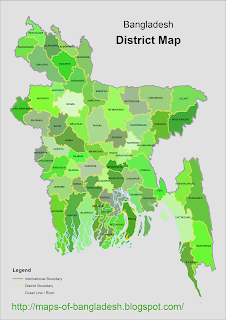The area's early history featured a succession of Indian empires, internal squabbling, and a tussle between Hinduism and Buddhism for dominance. Islam became dominant gradually since the 13th century when Sunni missionaries arrived. Later, Muslim rulers reinforced the process of conversion by building masjid (mosques) and madrassas.
The borders of modern Bangladesh were established with the partition of Bengal and India in August 1947, when the region became East Pakistan as a part of the newly formed State of Pakistan following the Radcliffe Line.[1] The earliest reference to the Bengali region was to a kingdom called Banga. (c. 1000 B.C.)The Buddhists ruled that land for centuries, but by the 10th century Bengal was primarily Hindu. During the year 1576, Bengal became part of the Mogul Empire, and the majority of East Bengalis converted to Islam. However, it was separated from West Pakistan by 1,600 km (994 mi) of Indian territory.
Due to political exclusion, ethnic and linguistic discrimination, as well as economic neglect by the politically dominant western-wing, popular agitation and civil disobedience led to the war of independence in 1971. After independence, the new state endured famine, natural disasters and widespread poverty, as well as political turmoil and military coups. The restoration of democracy in 1991 has been followed by relative calm and economic progress.
